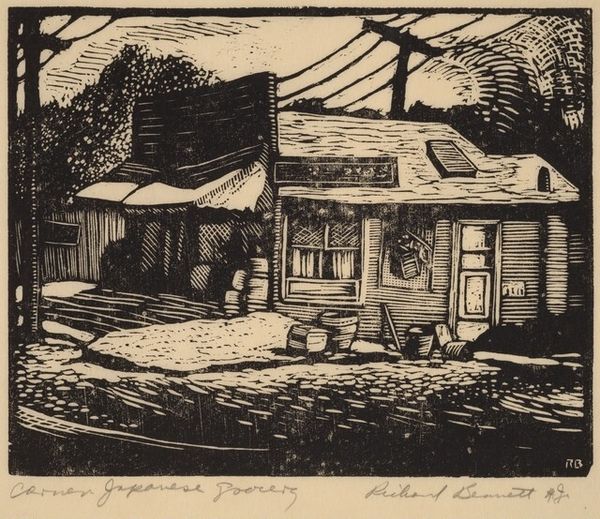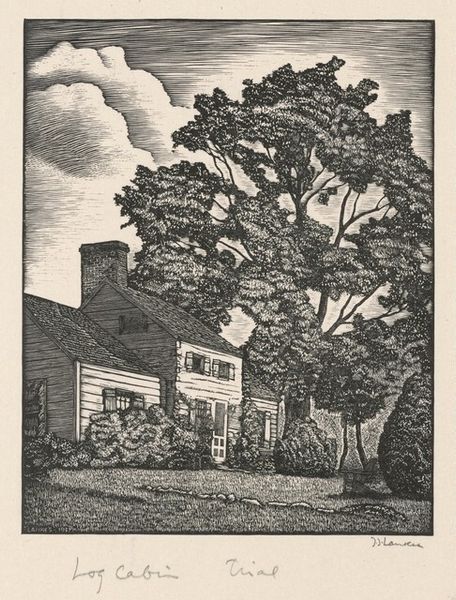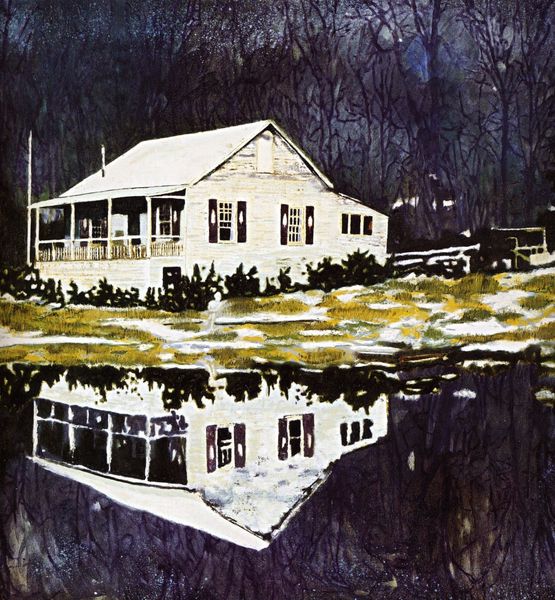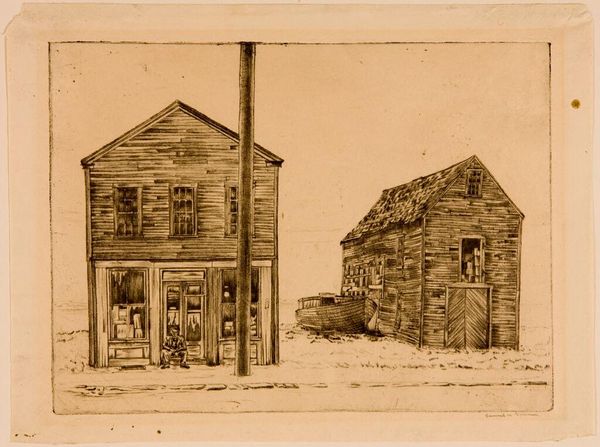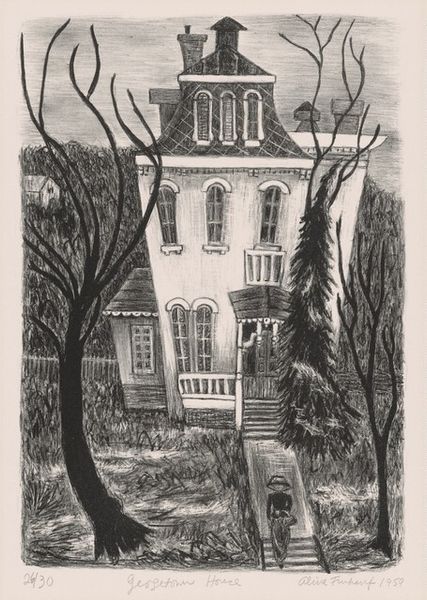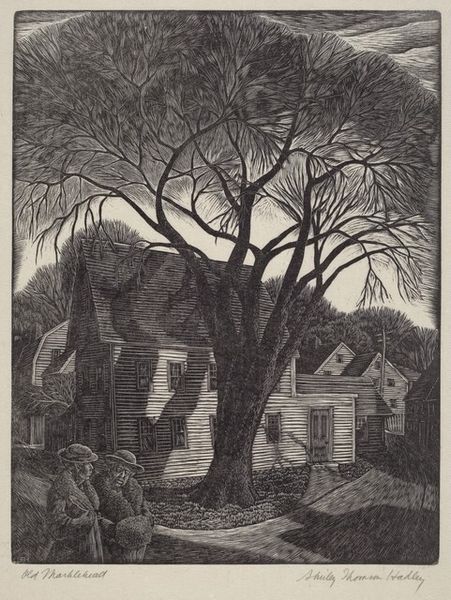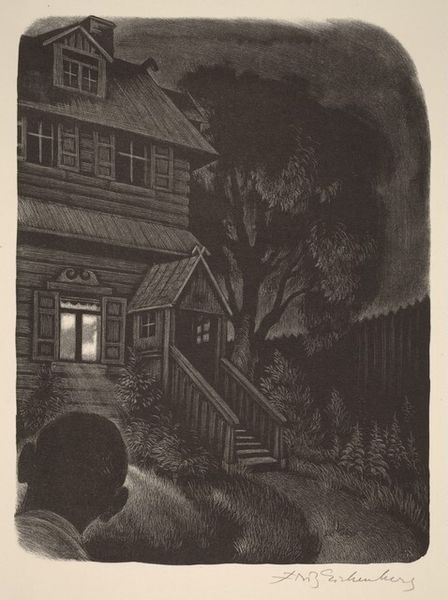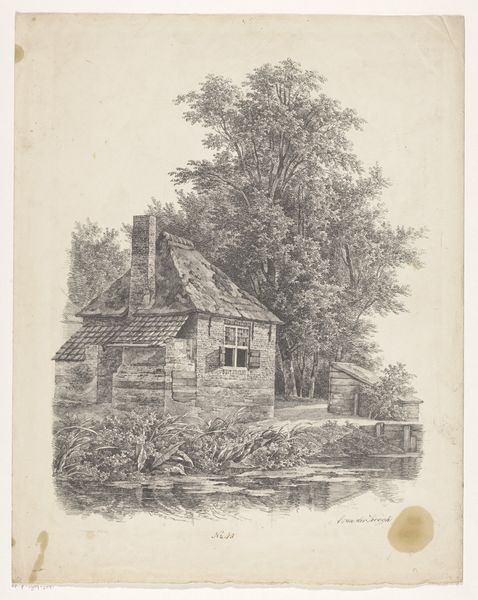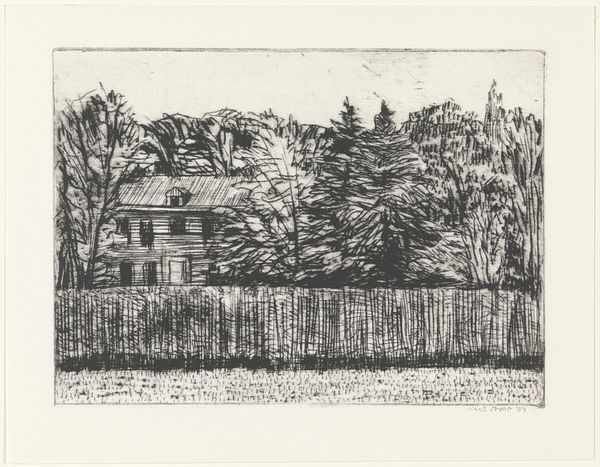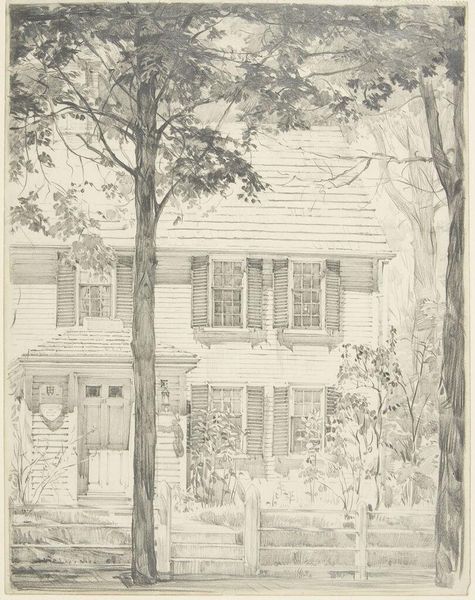
Dimensions: image: 276 x 172 mm
Copyright: © Peter Doig | CC-BY-NC-ND 4.0 DEED, Photo: Tate
Curator: Here we have Peter Doig's "Camp Forestia," a print held in the Tate collection. What strikes you upon viewing it? Editor: It feels like a half-forgotten memory. The hazy quality, the reflection... It's like a dream dissolving at the edges. Curator: Observe how Doig employs a restricted palette, allowing the structural elements to dominate. The horizontal lines of the wooden house contrast with the murky verticality of the reflected forest. Editor: Yes, and that lone figure. It could be anyone, or no one. I love how the indistinct forms allow for such open interpretation. Curator: Indeed. The interplay between the representational and the abstract creates a compelling tension, doesn't it? Editor: It does. It makes you wonder what's real and what's imagined. A fleeting moment captured, then faded away. Curator: A fitting interpretation of memory itself, wouldn't you say? Editor: Absolutely, and the quiet stillness of this print speaks volumes. I feel invited to linger in this space.
Comments
Join the conversation
Join millions of artists and users on Artera today and experience the ultimate creative platform.
tate 8 months ago
⋮
Grasshopper is Doig’s third print portfolio, following Ten Etchings 1996 (Tate P11471-P11480) and Blizzard ’77 1997 (Tate P11554-P11561). It was produced in an edition of thirty-five. Tate’s copy is one of seven additional proof sets. Each print is individually signed and numbered ‘TC’ (Tate copy) by the artist. The portfolio is presented in a pale yellow, hinged solander box bearing the artist’s name in dark brown. The title and colophon pages were designed by Peter B. Willberg and printed in dark green. The contents were printed at Hope Sufferance Press, London on 350gsm Zerkall paper and published by Charles Booth-Clibborn under his imprint, The Paragon Press. Colour etching involves a layering process sympathetic to Doig’s painting process of building up colours and image in many stages. The prints in Grasshopper were created using between one and three plates and a range of etching techniques. Variety in texture and tone was created with aquatint (a process for creating an even tonal field), open bite (a method in which unprotected areas of the plate are exposed to acid to produce a very light tone), deep bite (a process which results in very dark tones), spit bite (a method involving painting or splashing acid onto the plate resulting in painterly effects) and sugarlift (a process which allows the artist to paint marks that print rather than having to outline them negatively). The individual prints were originally untitled, but were titled by the artist on publication of Contemporary British Art in Print: The Publications of Charles Booth-Clibborn and his Imprint The Paragon Press 1995-2000 in 2001.

